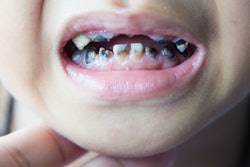
Youths with a history of foster care are more at risk of having poor oral health and are less likely to see a dentist for a specific dental problem or for routine care than those who have not been in foster care, according to a study published online June 2 in the Journal of the American Dental Association.
The University of Minnesota researchers found youths with a history of foster care in Minnesota had reduced odds of seeing a dentist for a dental problem compared to their peers with no such history (58.2% versus 71.2%). They also had reduced odds of seeing a dentist for routine dental care (69.6% versus 84.4%), the group reported.
The authors used data from the 2019 Minnesota Student Survey, which surveyed public school students in grades 5, 8, 9, and 11. The study population consisted of 4,969 children (3%) who had a history of foster care and 150,078 (97%) who had no experience in foster care.
The study authors noted the existence of racial disparities amongst children with a history of foster care in Minnesota. Data from 2019 extracted from the Minnesota Department of Youth Services show American Indian children were 18 times more likely and Black children were three times more likely to experience foster care than white children.
The authors reported that, to their knowledge, this is the first study in the U.S. to survey youths with a history of foster care about their oral healthcare needs.
They looked at seven oral health indicators and asked youths if they had experienced five types of dental problems in the past 12 months: toothaches or pain; decayed teeth or cavities; swollen, painful, or bleeding gums; whether they could not eat certain foods because of a dental problem; and whether they had missed one or more school days because of a dental problem.
The authors also probed as to whether a specific dental health issue had been treated by a dentist. They also asked about routine dental care to determine the last time the person was seen by a dentist for a checkup, exam, teeth cleaning, or other dental work.
They found that youths with a history of foster care were more likely to report at least one dental problem than those with no experience of foster care (44% versus 32.2%).
In terms of reasons why children with a history of foster care have more dental problems, co-author Rebecca Shlafer, PhD, pointed out in a statement that these children were more likely to be living in households experiencing poverty and were more dependent on Medicaid reimbursement for their dental care.
The authors speculated that Minnesota dentists may limit the number of Medicaid-enrolled patients they accept or place limitations on who they will see, such as taking only Medicaid-enrolled patients with special healthcare needs or those under a certain age.
The study sample size was a strength of the analysis, but self-reports by youths was a limitation, as self-reports may not capture undiagnosed caries that have not yet caused dental pain, according to Shlafer and colleagues.
More studies are needed to identify modifiable barriers to accessing oral healthcare for youths with a history of foster care, they concluded.



















